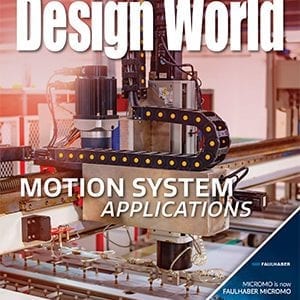
View original at www.designworldonline.com
IoT, smart components help improve motion systems Welcome to the (now) 5th annual Motion System Applications special issue. Our editorial team here at Design World puts together four issues on motion control each year, with the last one of the year focusing on motion system applications. Here, we look at some top application examples and how many of the vast array of motion control components, separate or together, are used to tackle some of the most challenging applications in industries from medical devices to semiconductor manufacturing and beyond. One of the biggest and broadest trends impacting virtually all of manufacturing is the so-called Fourth Industrial Revolution, also referred to as the internet of things (IoT) or the industrial internet of things (IIoT). It continues to shape developments across a range of industries, including robotics. Industrial robots and their cobot cousins are being used in the manufacture and production of a broad range of products, including in the automotive industry. This is no surprise given that the first known use of a commercial robot for industrial purposes was in fact in the automotive industry way back in 1961; specifically, a robotic arm installed at a GM plant in New Jersey was used to lift hot pieces of metal from a die casting machine and stack them. In this issue, we look at the way in which motion components and developments therein continue to improve industrial robots, aiding in their adoption in so many new applications. The IoT is also playing a role in improving production processes via machine monitoring. Case in point: A story about a high-speed palletizer where machine monitoring helped increase uptime. Another benefit for material-handling applications is the presence of more powerful and intelligent drives packed with more functions. These smart VFDs are handling tasks that once […]



Leave a Reply
You must be logged in to post a comment.